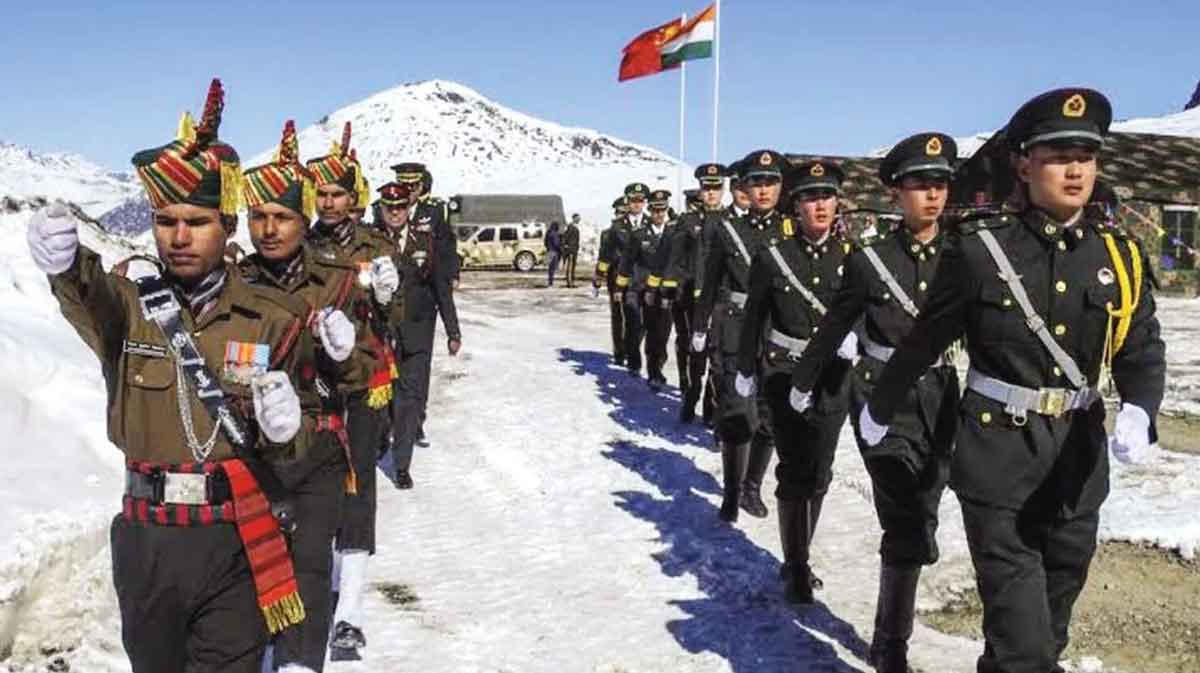In a significant step toward de-escalating tensions along the contested Line of Actual Control (LAC), External Affairs Minister S. Jaishankar recently acknowledged “some progress” in the disengagement process between India and China. This development follows high-level talks and years of strained relations, particularly after the 2020 Galwan Valley clashes. With both countries resuming verification patrols in the sensitive areas of Demchok and Depsang in Ladakh, this diplomatic breakthrough reflects efforts to restore peace along the border and opens up possibilities for further stabilization.
A New Phase in India-China Relations
Addressing the Indian diaspora in Brisbane, Australia, Jaishankar noted that although relations with China had been “very, very disturbed” since 2020, recent strides in disengagement represent a promising shift. “In terms of India and China, yes, we have made some progress,” he stated, underlining those tensions had significantly impacted the bilateral relationship. The presence of large deployments by both sides along the LAC prompted counter-measures, yet Jaishankar emphasized that disengagement would pave the way for more constructive actions.
Acknowledging that China has positioned substantial military forces along the LAC since 2020, Jaishankar also noted that India has taken reciprocal steps to safeguard its borders. He emphasized that moving forward from disengagement, the focus should shift to determining the future trajectory of bilateral relations. “The disengagement is a welcome step. It opens up the possibility that other steps could happen,” he said, reflecting India’s cautious optimism.
Verification Patrols Resume in Ladakh’s Demchok and Depsang
Following the recent disengagement agreement, India and China have resumed verification patrols in two critical areas in Ladakh: Demchok and Depsang. According to a statement from the Ministry of External Affairs (MEA), verification patrols began last week and are being conducted under mutually agreed protocols as part of the disengagement accord.
MEA spokesperson Randhir Jaiswal confirmed that patrolling activities are progressing smoothly at both locations. These verification patrols serve as confidence-building measures, designed to ensure both sides adhere to the disengagement terms while maintaining stability along the disputed boundary. The resumption of patrols marks a vital step toward addressing long-standing security concerns in eastern Ladakh, where tensions had been particularly high over the last three years.
High-Level Diplomatic Talks Lead to Breakthrough Agreement
Last month, Indian Prime Minister Narendra Modi met Chinese President Xi Jinping on the sidelines of the 16th BRICS Summit in Kazan, Russia—the first such bilateral discussion in five years. The meeting led to the breakthrough agreement on disengagement, with Foreign Secretary Vikram Misri highlighting the extensive diplomatic and military discussions that preceded this outcome. Misri explained that the recent agreement reflects a shared understanding that mutual peace and stability at the border are prerequisites for normalizing broader bilateral relations.
Military commanders from both nations played key roles in the negotiations, working together over several rounds of talks to address lingering tensions from the 2020 standoff. Misri noted that these discussions had previously resolved standoffs at some areas along the LAC, though certain friction points remained until recently. The new agreement aims to restore the status quo and alleviate the strategic deadlock that has characterized India-China relations in recent years.
Tensions Since the 2020 Galwan Valley Clash
The recent disengagement steps are significant, considering the severity of the 2020 Galwan Valley clash—the deadliest confrontation between Indian and Chinese forces in over four decades. The June 2020 incident resulted in casualties on both sides and was a turning point that escalated the border dispute, leading to widespread calls for de-escalation and reinforced security measures.
Both countries have since maintained a substantial military presence along the LAC, reinforcing their positions in anticipation of further confrontations. However, this prolonged standoff strained diplomatic ties, leading to a series of diplomatic and military negotiations. These engagements laid the groundwork for the current progress in disengagement, which both countries view as the first concrete step toward restoring peace and stability.
The Path to Sustainable Peace
In the aftermath of the recent diplomatic engagements, both India and China have emphasized the need for peace, mutual respect, and sensitivity in managing their shared border. Prime Minister Modi, in his conversation with President Xi, stressed that peace in the border areas is essential for normalizing relations between the two countries. Both sides have committed to upholding the principles of trust and mutual sensitivity in addressing contentious issues, underscoring the importance of stability along the LAC for broader regional security.
The recent progress in disengagement between India and China marks a cautiously optimistic step toward resolving one of the most challenging security issues in South Asia. With verification patrols resumed and a high-level diplomatic framework established, both nations have demonstrated a commitment to reducing tensions along the LAC. However, the path to a sustainable and comprehensive resolution will require continued diplomatic engagement and vigilance. As India and China move forward, their focus on peace and mutual respect will be crucial in fostering stable and productive relations in the years to come. The recent developments signal hope for a future where diplomatic efforts triumph over conflict, paving the way for lasting regional stability.





